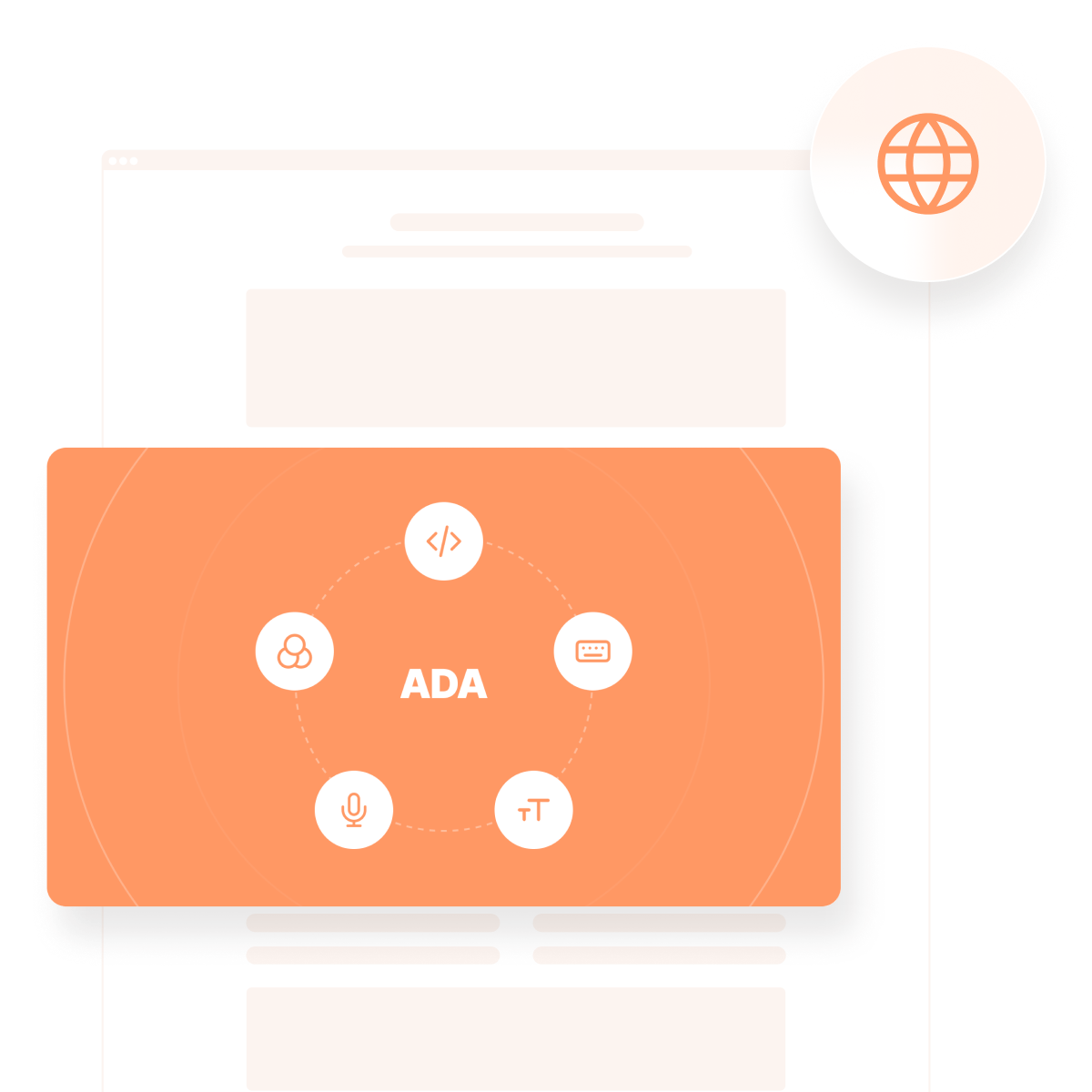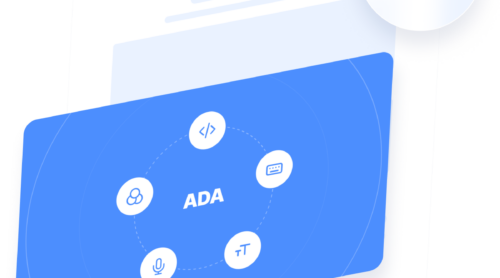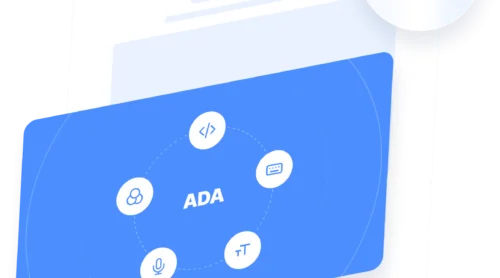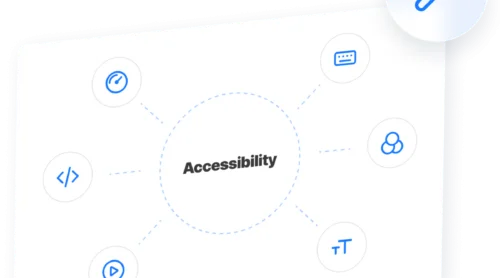Making your website accessible to everyone isn’t just a best practice — it’s a legal and ethical obligation. As digital spaces expand, the importance of inclusive design has never been greater. Businesses that ignore accessibility issues excluding users and facing potential legal action due to non-compliance with ADA regulations.
A reliable website ADA compliance checker provides a full accessibility evaluation for websites, helping you identify and fix barriers that prevent users with disabilities from fully engaging with your content. In this article, we’ll walk you through the best options available to help ensure your website meets the latest accessibility standards — and keeps you on the right side of compliance laws.
Top ADA Compliance Checkers: Comparison
Choosing the right checker is crucial for ensuring your website is accessible to all users and meets legal requirements. Whether you’re looking for a free tool to get started or a comprehensive solution for ongoing accessibility monitoring, the options vary in pricing, features, and ease of use. This table breaks down the most popular and effective checkers to help you quickly compare their strengths and choose what fits your needs best.
Each of these website compliance checker tools offers distinct capabilities — from compliance reporting software to full online accessibility audit solutions. Use this overview to pinpoint the most suitable option for your accessibility strategy.
| Tool | Free Plan | Best For | Key Features | Pricing (Starting) | Ease of Use |
|---|---|---|---|---|---|
| WAVE | Yes | Quick manual testing and visual feedback | Browser extension, in-page error highlighting, WCAG 2.1 support | Free | Very Easy |
| axe DevTools | Yes | Developers needing deep code-level insights | Automated scans, integration with CI/CD, Chrome DevTools support | Free + Pro from $40/month | Moderate |
| Siteimprove | Yes | Marketing and editorial teams | Real-time suggestions, dashboard analytics, Chrome extension | Free extension + custom pricing | Easy |
Each of these tools can help you take the first step toward an accessible and ADA-compliant website, but their approaches and levels of automation vary. In the next sections, we’ll dive deeper into each checker to explore what makes them stand out and how they can help your business meet accessibility goals effectively.
WAVE
WAVE (Web Accessibility Evaluation Tool) by WebAIM allows users to check the accessibility of individual web pages by highlighting elements that may create barriers for users with disabilities. It visually marks errors and alerts directly on the rendered page, helping users understand accessibility issues in their actual layout context. The tool is especially useful for spotting issues with contrast, alt text, ARIA usage, and heading structures.
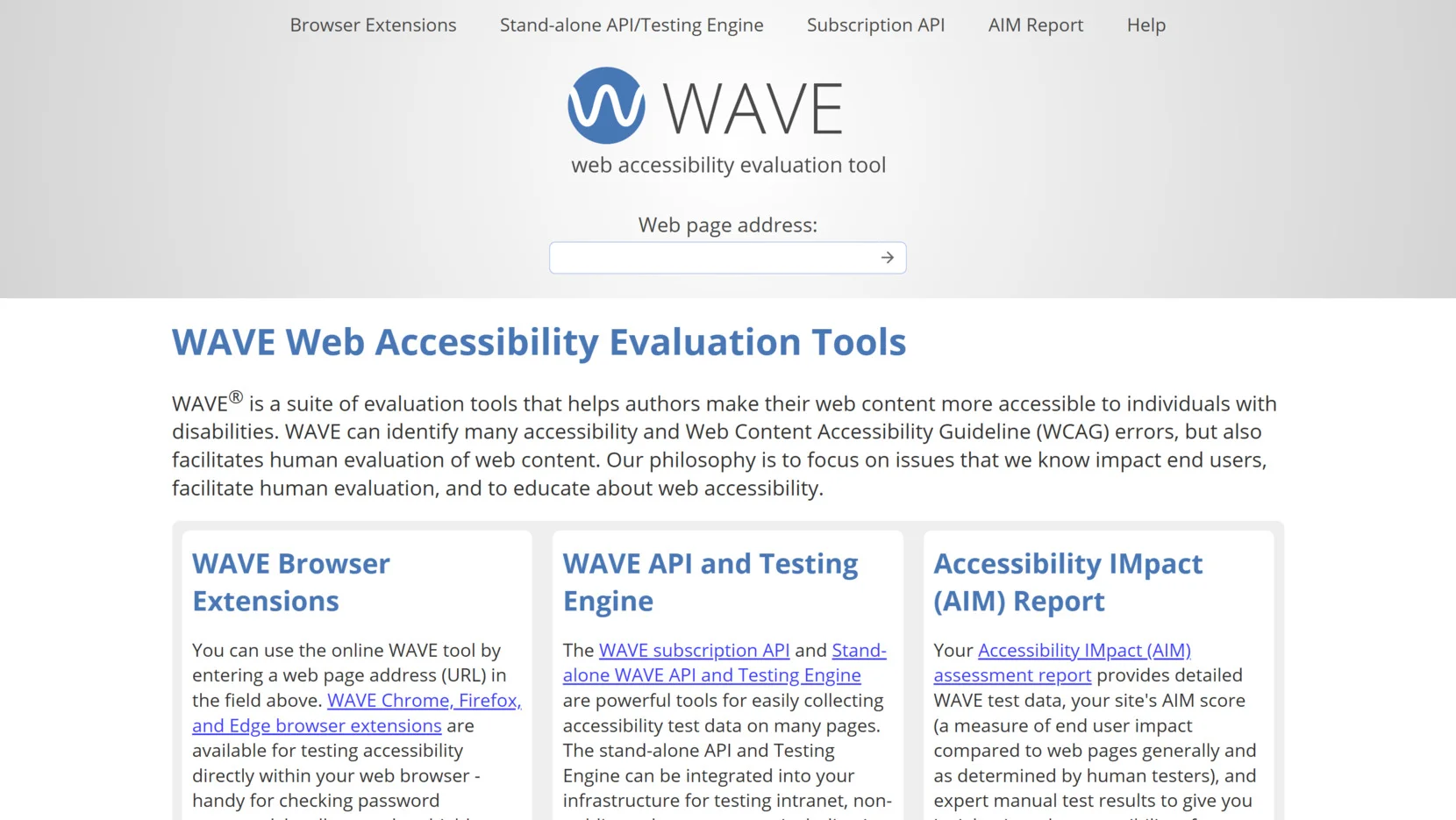
The tool works through a browser extension for Chrome and Firefox or via direct URL input on its website. WAVE’s evaluations are based on WCAG 2.1 standards, and results are displayed through color-coded icons, making it simple to identify types of problems and their locations.
How it works: Users can enter a URL on the WAVE website or install a browser extension. The tool scans the loaded page and overlays visual indicators of issues like missing alt attributes or insufficient contrast. No coding or integration is needed, and no information is sent to external servers when using the extension — ensuring full privacy and data control.
Key features:
- Visual Issue Markers. Errors, alerts, and features are highlighted directly on the webpage view.
- WCAG 2.1 Support. Evaluations are aligned with modern web accessibility guidelines.
- Browser Extensions. Available for Chrome and Firefox with instant, private evaluations.
- Contextual Feedback. Provides documentation and explanations for each flagged issue.
- Structural Outline Tool. Helps assess heading structure and ARIA landmark usage.
Pricing: WAVE is completely free to use, both as a browser extension and online via its public URL checker.
Ideal for: Accessibility professionals, developers, and content editors who need a quick and private way to evaluate individual pages for compliance with ADA standards.
axe DevTools
axe DevTools by Deque Systems is a browser-based ADA website compliance checker that helps developers and digital teams identify and resolve accessibility issues directly within their development environment. It ensures your website aligns with accessibility standards early in the development process, minimizing the risk of post-launch errors or legal exposure. Its seamless integration with browser dev tools makes it a go-to for tech-savvy teams aiming to bake compliance into their workflow.
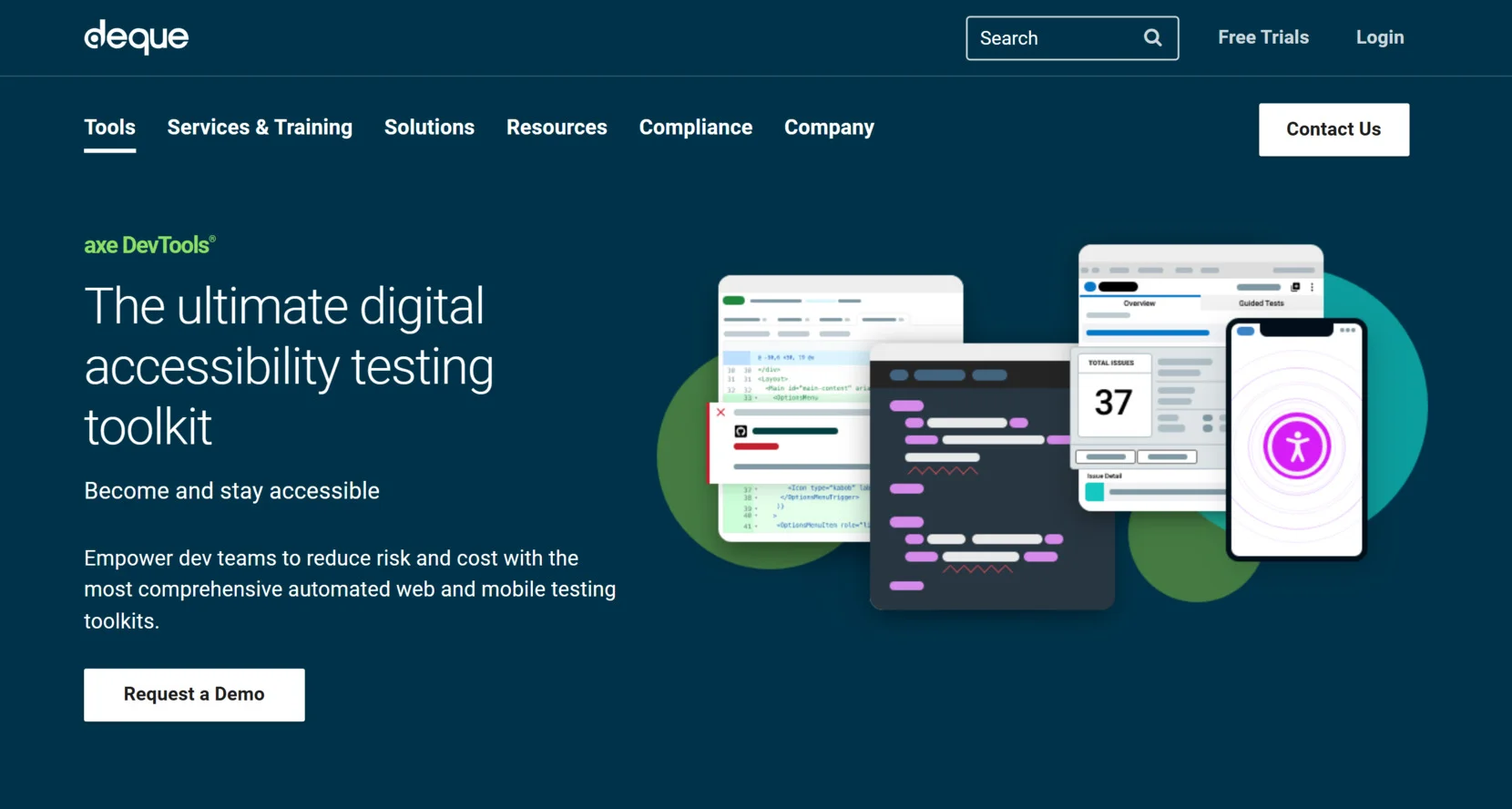
What sets axe DevTools apart is its layered functionality, ranging from basic accessibility checks in the free tier to advanced scripting, automated testing, and CI/CD integration in the Pro version. This allows teams to conduct thorough online accessibility audits and maintain consistency across code changes. It supports WCAG 2.1 standards and offers actionable suggestions for each identified issue, helping teams not only find errors but fix them efficiently.
How it works: Developers can install the Chrome extension to run accessibility scans directly in the browser’s dev tools panel. axe DevTools flags violations, marks their locations in the DOM, and provides remediation advice. In the Pro version, users gain access to test scripting, issue history tracking, and automation features that integrate into CI pipelines for continuous validation.
Key features:
- Developer Integration. Runs inside browser DevTools with direct code references and DOM-based highlights.
- Automated Testing Support. Offers scripting and CI/CD pipeline compatibility for scalable audits.
- Detailed WCAG Guidance. Includes clear descriptions and remediation suggestions for each issue.
- Free & Pro Versions. Flexible usage for both individual developers and enterprise teams.
- Secure & Private. All testing happens locally — no data is sent to servers, preserving user privacy.
Pricing: axe DevTools offers a free version for basic scans, while Pro features start at $40/month per user.
Ideal for: Developers, QA teams, and accessibility specialists working within a technical development environment who need deep scanning, automation, and WCAG compliance validation.
Siteimprove
Siteimprove’s accessibility checker empowers non-technical users to evaluate web pages directly from their browser, providing instant visual feedback on potential accessibility issues. Designed to support website ADA compliance efforts, it helps content editors, marketers, and teams unfamiliar with code understand how their content performs in terms of accessibility standards. It’s ideal for identifying common problems like missing alt text, link ambiguity, and heading structure inconsistencies.
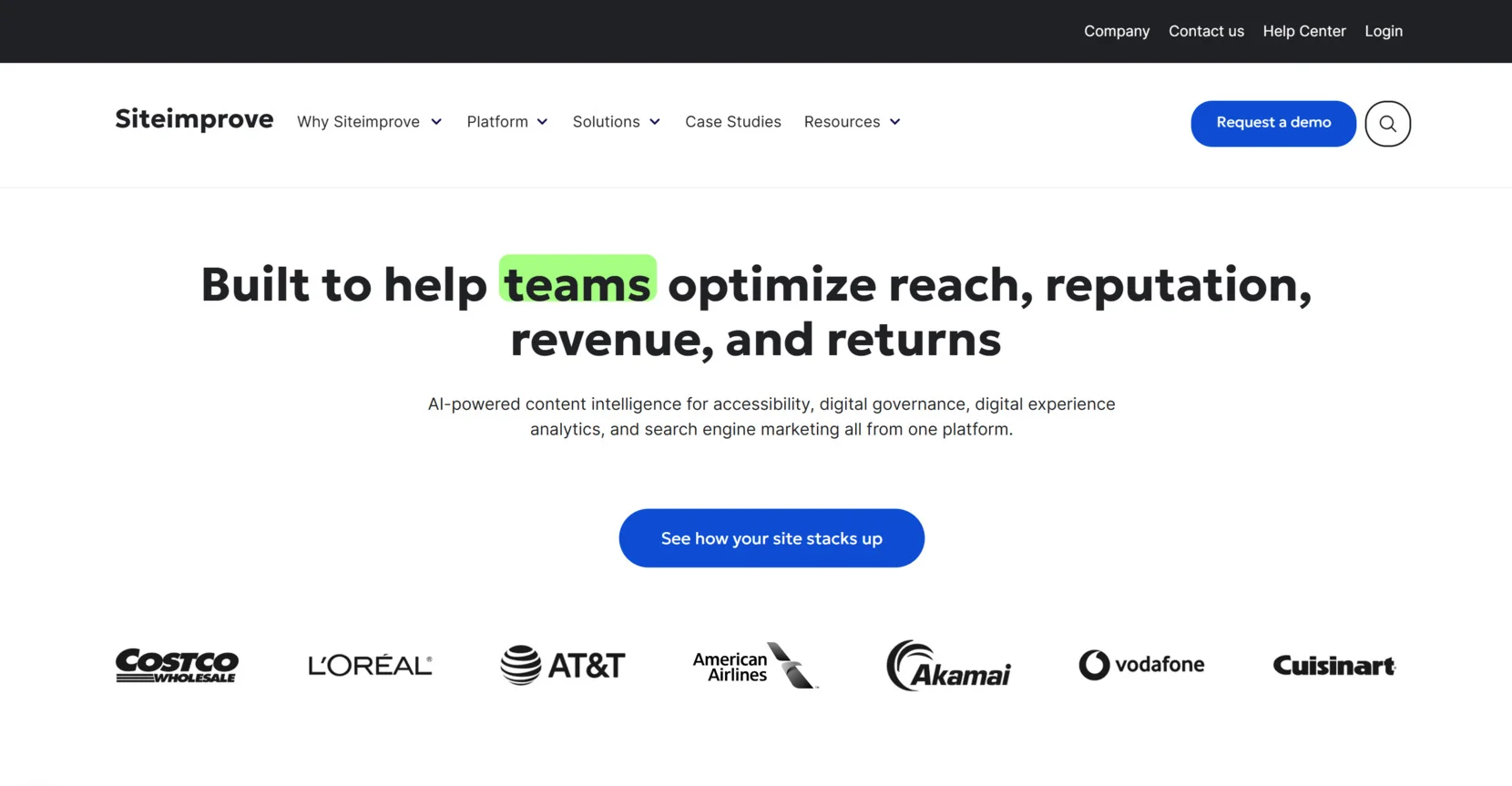
What makes Siteimprove stand out is its simplicity and seamless user experience. While more advanced tools focus on deep audits, this Chrome extension serves as a practical first step toward compliance. It’s designed with usability in mind, offering on-page issue markers, accessibility scores, and suggested fixes. Because it’s based on WCAG 2.1, users can confidently trust the recommendations provided during their accessibility review process.
How it works: Users install the extension in Chrome and navigate to any webpage they want to check. A single click scans the page and overlays issue markers with explanations and links to resources. Since the analysis happens locally, it’s fast and secure — perfect for live editing or last-minute checks before publishing content.
Key features:
- Real-Time Page Scanning. Instant evaluation of accessibility issues without needing to leave the page.
- Visual Issue Indicators. Highlights problems like contrast errors, missing alt attributes, and link text issues.
- WCAG 2.1 Compliance. Follows current accessibility guidelines to ensure up-to-date audits.
- Built for Non-Developers. Easy for editors and marketers to use without technical expertise.
- Educational Tips. Each issue comes with context and best practices to support learning.
Pricing: The Chrome extension is free to use; additional enterprise features are offered through Siteimprove’s paid platform with custom pricing.
Ideal for: Content creators, marketing teams, and editors who need a quick, intuitive way to ensure accessibility without relying on developers.
How to Choose the Right ADA Checker
With growing legal requirements and user expectations, selecting the right ADA compliant website checker is more than just a technical task — it’s a strategic decision that affects your user experience, legal standing, and brand reputation. The best tool for your needs will depend on your goals, the type of business you operate, your technical comfort level, and the features required to stay ahead of compliance standards.
For developers needing deep code-level insights
If you’re building or maintaining websites and want to catch accessibility issues early in the code, choose a tool like axe DevTools. It integrates directly into your browser’s developer tools and supports automated testing with CI/CD workflows, making it ideal for in-house development teams focused on continuous delivery and technical accuracy.
For content teams and non-technical users
For editors, marketers, or content managers who want to ensure compliance without diving into code, Siteimprove is a great choice. Its real-time Chrome extension provides intuitive, visual feedback on accessibility issues — no coding knowledge required.
For small businesses on a budget
If you’re a solo entrepreneur or run a small business and need a free or low-cost way to address ADA compliance, WAVE by WebAIM is a great starting point. It’s a browser-based tool that quickly scans your website and flags accessibility issues, making it ideal for those who want instant insights without technical complexity.
For a more in-depth review and Chrome integration, consider axe DevTools — it’s developer-friendly and offers both free and paid versions, giving you flexibility as your accessibility needs evolve.
For growing teams or agencies needing scalable control
As your business scales or if you’re handling multiple web properties for clients, Siteimprove provides a robust, enterprise-level platform. It combines automated testing with actionable recommendations and governance tools, helping your team stay compliant across large or evolving sites.
For quick, one-page checks and education
If you’re just starting out or need a tool for spot-checking individual pages, WAVE offers a reliable, free ADA scanner with visual indicators and clear explanations. It’s excellent for raising awareness and guiding early improvements, especially for smaller projects or educational purposes.
- Identify your team’s technical skills — opt for no-code tools if developers aren’t involved.
- Consider your volume — if you manage many pages, look for scalable reporting and automation.
- Check for compatibility with your platform — especially if you’re using a CMS like WordPress or Shopify.
- Think beyond detection — choose tools that offer remediation help, not just audits.
- Evaluate support and documentation — ensure you have access to resources for issue resolution.
Ultimately, the right website ADA compliance checker will align with your unique goals, business structure, and compliance needs. Use the feature comparison above to match your requirements with the strengths of each tool.
Next, we’ll explore the practical advantages of using an accessibility checker — not only for meeting legal standards but also for enhancing the usability of your website for everyone.
Why Use a Website Compliance Checker
After narrowing down the best tool for your needs, it’s crucial to understand why using a checker matters in the long run. These checkers are more than just diagnostic tools — they help ensure accessibility, legal protection, and improved user experience.
Below are the core benefits of integrating them into your workflow:
- Detects hidden issues. ADA compliance checkers identify problems like missing alt text, improper heading structures, or contrast errors that are often overlooked during manual reviews.
- Reduces legal risk. Regular use of a compliance checker helps maintain alignment with accessibility standards, lowering the likelihood of lawsuits or compliance fines.
- Saves development time. By catching errors early, these tools reduce the time spent on rework and post-launch fixes, streamlining your accessibility efforts.
- Improves usability. Fixing issues flagged by a checker leads to a more inclusive and intuitive experience for all users, including those with disabilities.
- Enhances SEO performance. Many accessibility best practices — like semantic HTML and proper heading structure — also support search engine optimization, helping you rank better.
- Provides documentation. Some tools generate compliance reports, which can be useful for audits, internal tracking, or demonstrating accessibility efforts to stakeholders.
- Encourages ongoing improvement. Checkers promote continuous monitoring and updates, ensuring your website remains accessible as content and technology evolve.
Whether you’re running a personal project or managing content for a large organization, a reliable ADA website compliance checker adds long-term value and helps you meet evolving accessibility requirements with confidence.
Next, we’ll walk through the most effective methods for making a website ADA compliant — manually and with the help of purpose-built accessibility solutions like Elfsight’s widget.
Ways to Make a Website ADA Compliant
Running a website ADA compliant check is just the beginning — achieving true compliance requires action. Once accessibility issues are identified, you’ll need to take the right steps to fix them. This section outlines the three main approaches to making a website ADA compliant: manual fixes, widget-based solutions, and hybrid strategies that combine both.
Manual adjustments for core accessibility
Many accessibility problems can be resolved manually through direct updates to your content and code. This includes improving color contrast ratios, writing descriptive alt text for all images, using logical heading structures, and implementing appropriate ARIA roles for screen reader support. While effective, this method requires technical knowledge and ongoing diligence to maintain.
Using a widget for instant improvements
If you’re looking for a faster way to meet ADA expectations, consider using the Elfsight ADA compliance widget. It allows you to deploy a floating accessibility menu that enables features like font resizing, keyboard navigation, and visual contrast toggling. This no-code solution helps implement disability-friendly web practices without requiring major development changes.
Combining tools for better coverage
The most effective method is a hybrid approach: start by running an ADA compliant website check using a checker tool, apply manual fixes for critical issues, and install a widget to handle usability enhancements in real time. This combination ensures both technical compliance and real-world accessibility improvements.
- Manual fixes: Best for structural and semantic corrections (e.g., headings, ARIA, alt attributes).
- Widget solution: Ideal for immediate user-facing adjustments and quick deployment.
- Hybrid approach: Offers a balanced and scalable method to maintain long-term accessibility.
Improving your website’s accessibility is a continuous process. Whether you rely on manual development work, smart tools, or plug-and-play widgets, the key is to remain proactive and responsive to the needs of all users.
Set up the Elfsight Accessibility widget on your website
Understanding how to make your website ADA compliant starts with the right tools, and the Elfsight accessibility widget is one of the most efficient. This user-friendly, no-code solution helps align your website with WCAG compliance standards.
Here’s a comprehensive walkthrough for setting up and configuring the Elfsight Accessibility widget based on the provided interface:
- Pick a Template. Head into the Elfsight accessibility widget editor. Select the prebuilt “Accessibility Template” and hit “Continue with this template” to begin editing.
- Check Your Website’s Accessibility. Type in your website’s URL in the audit tool and click “Check.” This action will run a diagnostic powered by Google Lighthouse, showing you what elements need improvement to meet accessibility requirements.
- Adjust the Widget’s Behavior. Go to the “Settings” tab where you can set the widget’s language, update interface text, and control its visibility across devices and pages. You can choose its position on the screen, set how long a user’s preferences are remembered, and even apply custom styling using your own CSS or JavaScript.
- Install the Widget Code. Click “Add to website for free” to generate the embed code. Copy the code snippet and paste it into your website’s backend — preferably in the global footer — to ensure it appears on all pages. Save your changes and publish the update to make the widget live.
After installation, your website will be more accessible to all users, offering tools that help address individual accessibility needs while aligning with WCAG best practices.
Create your own accessibility widget in 1-2-3!
FAQ
This section answers the most common questions users face when ensuring your website is ADA compliant. From legal implications to functionality concerns, these insights help clarify how checking tools work.
Can a checker fix the issues it finds?
Are ADA compliance checkers legally required?
Can a compliance checker prevent lawsuits?
How often should I check my website for ADA compliance?
Do I still need manual fixes if I use a widget?
Final Thoughts
Choosing the right ADA website compliance checker is a key step toward creating a more inclusive and legally protected digital experience. ADA compliance isn’t a one-time task — it’s an ongoing effort. Proactively using a website ADA checker not only reduces the legal risk of non-compliance, but also improves the user experience for every visitor.
Start by evaluating your current accessibility status, choose the tools that match your needs, and take actionable steps to fix any gaps. With the right combination of checkers and widgets, your website can be both accessible and user-friendly — every step of the way.


